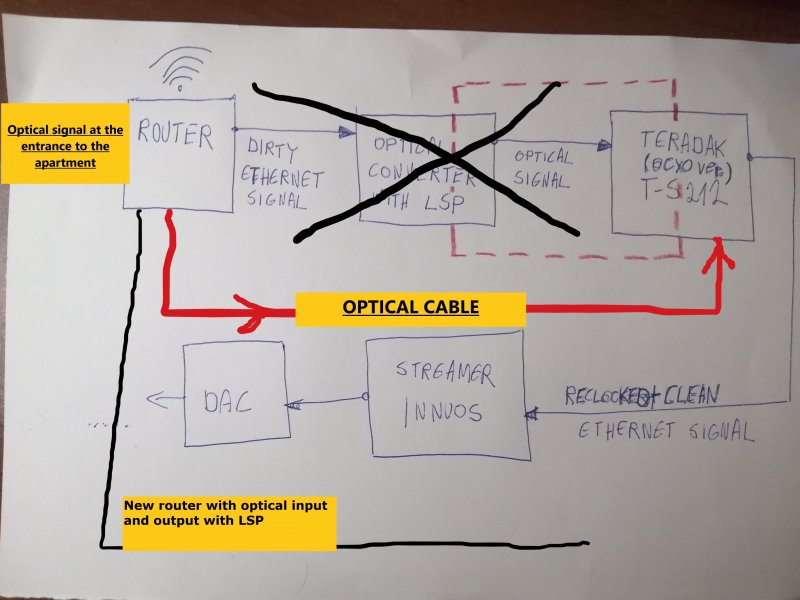Thanks for the quick response. I also thought about the 211 version, but there everything is together in one chamber, which means a greater possibility of influencing EMI (for both types, I can imagine a better LPS implemented).At first glance, your diagram looks like a good starting point.
In my experience equipment at the 'dirty' side is less influential on sound quality so you can generally get away with more ordinary stuff.
When choosing the Teradak 212 SFP version your cables need to be chosen along with the SFP you choose to use with it. This also affects the choice of converter at the 'dirty' side, because they need to play together...
Cheers, Hans.
I'm really sorry, but can you tell me more simply, or give specific types or examples?


